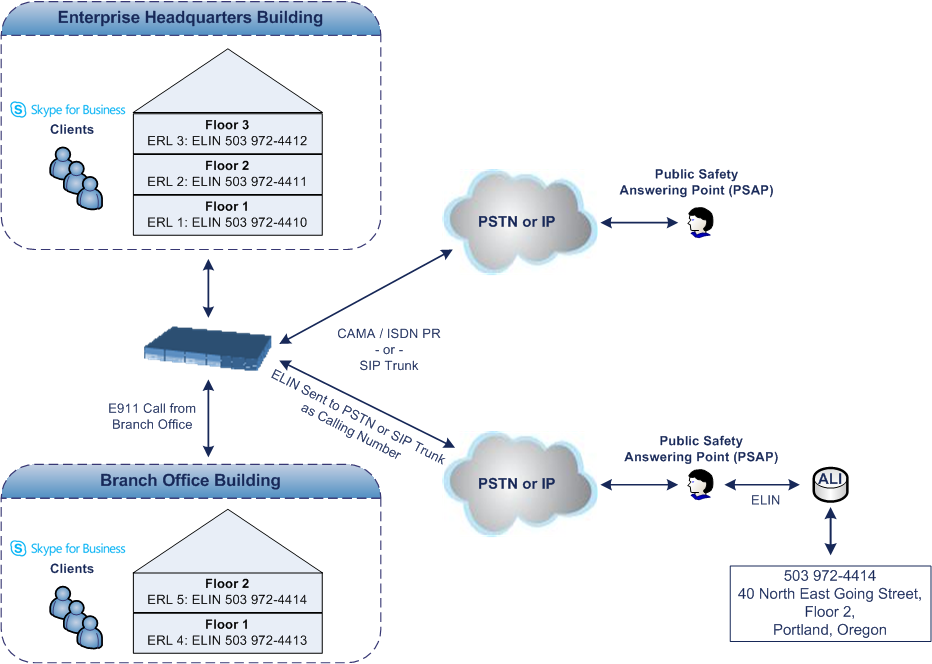Passing Location Information to the PSTN Emergency Provider
When a Skype for Business client, enabled for E9-1-1 emergency services, dials 9-1-1, the location data and callback information stored on the client is sent with the call through the Mediation Server to a SIP Trunk-based
Skype for Business passes the location information of the Skype for Business client in an IETF-standard format - Presence Information Data Format - Location Object (PIDF-LO)–in a SIP INVITE message. However, this content cannot be sent on the SIP Trunk
The ERL defines a specific location at a street address, for example, the floor number of the building at that address. The geographical size of an ERL is according to local or national regulations (for example, less than 7000 square feet per ERL). Typically, you would have an ERL for each floor of the building. The ELIN is used as the phone number for 911 callers within this ERL.
The figure below illustrates the use of ERLs and ELINs, with an E9-1-1 call from floor 2 at the branch office:

The table below shows an example of designating ERLs to physical areas (floors) in a building and associating each ERL with a unique ELIN.
Designating ERLs and Assigning to ELINs
|
ERL Number |
Physical Area |
IP Address |
ELIN |
|---|---|---|---|
|
1 |
Floor 1 |
10.13.124.xxx |
503 972-4410 |
|
2 |
Floor 2 |
10.15.xxx.xxx |
503 972-4411 |
|
3 |
Floor 3 |
10.18.xxx.xxx |
503 972-4412 |
In the table above, a unique IP subnet is associated per ERL. This is useful if you implement different subnets between floors. Therefore, IP phones, for example, on a specific floor are in the same subnet and therefore, use the same ELIN when dialing 9-1-1.